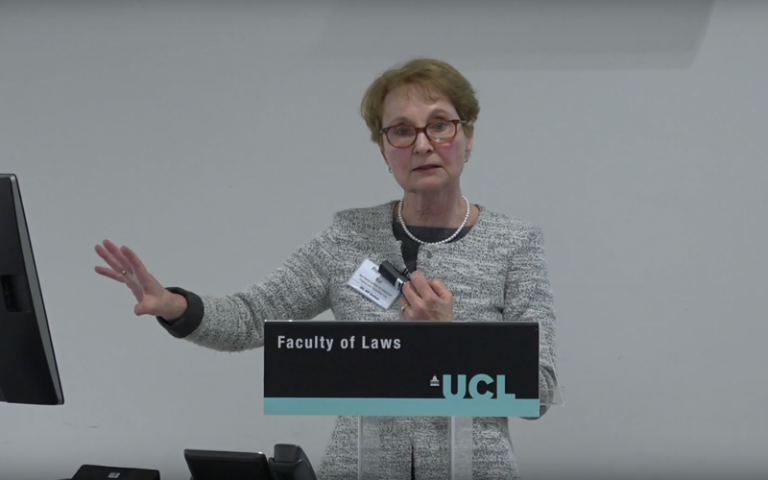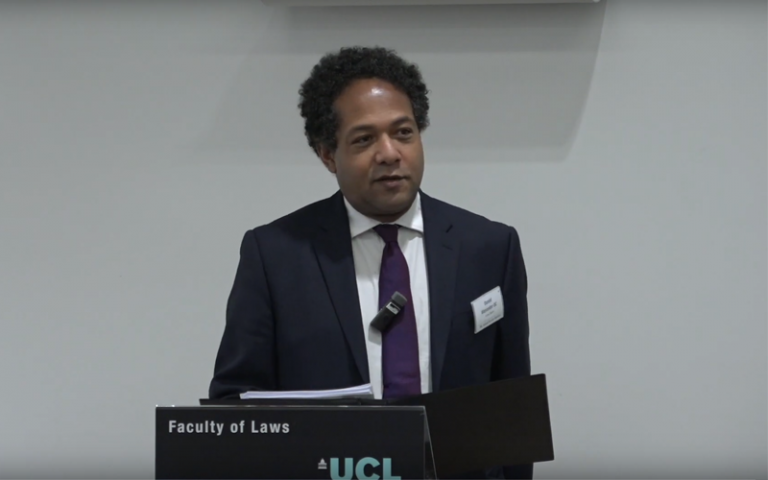UCL IBIL event debates ‘What is the Function of Functionality in Trade Mark Law’
18 February 2020
‘What is the Function of Functionality in Trade Mark Law’ was the theme of this year's annual UCL IBIL brand seminar.

What is the function of functionality in trade mark law? This was the subject under debate at an event organised last week by UCL Laws’ Institute of Brand and Innovation Law (IBIL) attended by nearly 200 IP practitioners, academics and students.
As the subject matter of trade mark law has expanded, any distinctive ‘sign’ to be registered as a trade mark, which includes characteristics such as the shape or colour of the goods or its packaging. This could be problematic. While trade mark registration might protect the origin-related messages which these features convey to consumers, the trade mark owner might also enjoy ‘back-door’ protection covering what the product is, how it works or why it has consumer appeal. In this way, trade mark law has the ability to encroach on aspects of a product which other IP rights are either there to protect, or deem should vest in the public domain. When product markets are blocked in this way, trade mark protection no longer promotes fair competition. Consumers either have to pay higher ‘monopoly’ prices or else make do with less choice.
EU trade mark law includes a safeguard in the form of three ‘functionality’ exclusions which keep free those characteristics of goods which other traders need to access in order to compete. These exclusions prevent registration of signs which result from the nature of the goods, which are necessary to achieve a technical result, or which otherwise give substantial value to the goods. The legislature clearly sees this as important because unlike many other absolute grounds for the refusal, an objection that the subject matter is ‘functional’ cannot be overcome by evidence that the mark has acquired a distinctive character.

Allan James, Senior Hearing Officer and Head of Trade Mark Tribunal at the UK IPO, outlined some of the practical difficulties of applying the law which Professor Kur had summarised. For example, in terms of the technical shape exclusion, was it possible to avoid the exclusion by configuring a number of individually technical features into new arrangement; how should complex designs be treated; does evidence that a very large number of different functional solutions cast light on whether the shape at issue is really just functional; and can we read anything across from EU case law on registered designs? In discussing the role of expert evidence, Mr James concluded that it could be important, but was rarely determinative on its own. Common issues were the objectiveness of their evidence and the need for it to be concise and focussed upon the relevant issues.
Perhaps we should look to US trade mark law for the solution, since functionality has been an integral part of US trade mark law for far longer? Professor Mark McKenna, John P. Murphy Foundation Professor of Law at Notre Dame Law School, soon disabused the audience that the position in the US was any clearer. Providing a clear and concise whistle-stop review of over a hundred years of case law, he explained how US courts have vacillated between a ‘right to copy’ and a ‘need to copy’ role for functionality. Utilitarian functionality, he explained, continues to be applied inconsistently since some courts still follow the Morton-Norwich approach which takes account of availability of alternative designs, despite the US Supreme Court clear statement, in TrafFix, that alternatives are “irrelevant”. (He labelled Morton-Norwich “zombie doctrine” because it defies all attempts to be killed off!) Aesthetic functionality is even more contentious. Some federal circuits simply refuse to recognise that it exists, while others are overly-reluctant to refuse protection on the basis that protection of that feature would place competitors at ‘a significant, non-reputation-related disadvantage.’
Prof Saeema Ahmed-Kristensen, Professor of Engineering Design at the Royal College of Art was the final panellist, and brought a designer’s perspective to the debate. To her, when contemplating a product’s “technical function”, the notion of unavailability of alternative designs was somewhat oxy-moronic, since ‘design’ by definition is the consideration of alternative solutions to any given problem. She explained that some product forms, such as knives and scalpels, have not changed much over time, but here, reframing the ‘problem’ enables new solutions to be created which permits innovation to occur. Professor Ahmed-Kristensen advised that a product’s aesthetic function equates to design ‘value’ which is determined by a consumer’s emotional response to the product. This is a combination of visceral (initial impression), behavioural (user experience, performance and usability) and reflective (self-image, personal satisfaction and memories) elements. User satisfaction i.e. that a product is in some way life-enhancing or rewarding, has three facets aesthetics (appealing to the senses), associations (what does it suggest or remind you of?) and perceptions (what does it make you feel?). Thus, she concluded that trade mark law is likely to struggle when it seeks to distinguish between value resulting from its ‘inherent’ shape and that which results from its recognition as a badge of origin.

Read more
- Read more about the seminar on the event page
- Watch a recording of the event on the UCL Laws YouTube channel
- Review the panel's presentation slides
 Close
Close

